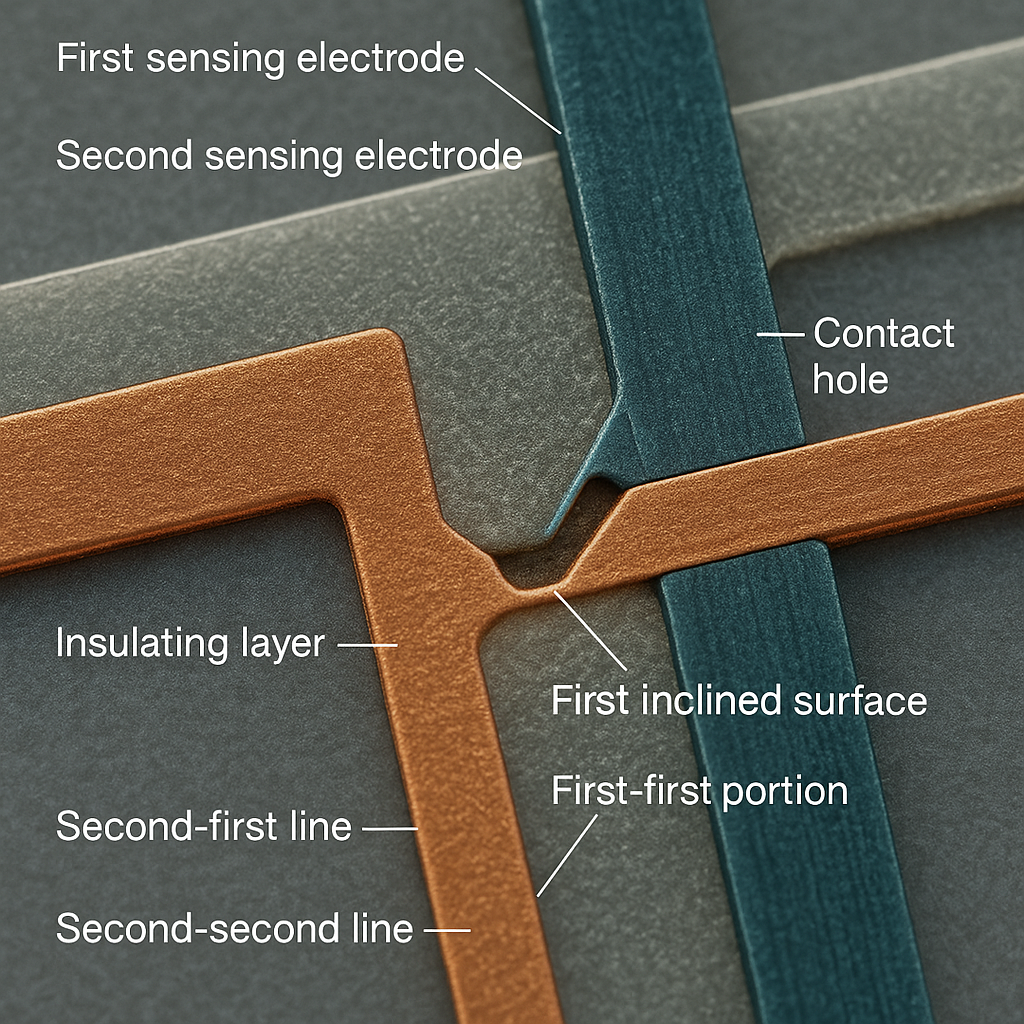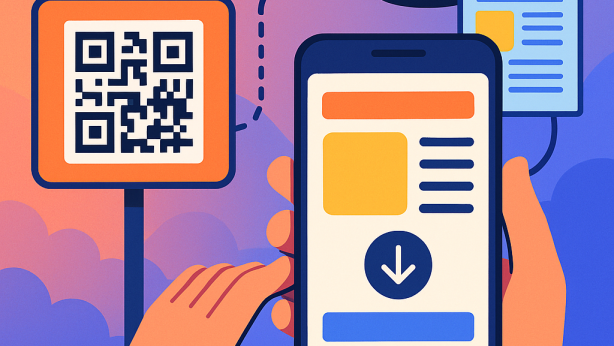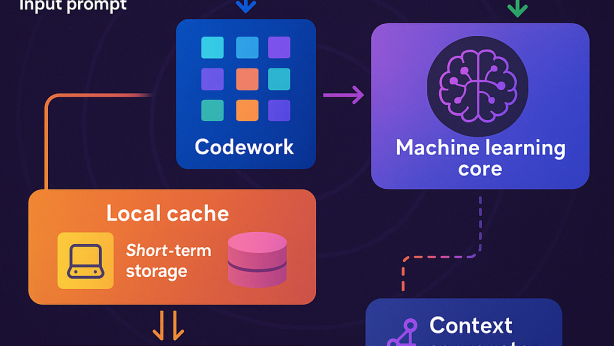INPUT SENSING PART AND DISPLAY DEVICE INCLUDING THE SAME

Invented by LEE; SEUNGCHAN, KO; GYUNG-MIN, PARK; YONG-HWAN

Let’s take a close look at a new patent for an input sensing part used in display screens, such as those found on smartphones and tablets. This patent solves a tricky problem that affects the quality of touchscreens, especially when it comes to unwanted colored bands that can show up on the screen. We’ll explore the background, the science and older methods, and then break down the new invention and why it matters.
Background and Market Context
People use screens every day. Phones, tablets, laptops, even car dashboards have screens that you can touch. These screens need to show bright, clear images and also respond quickly when you touch them. The way a screen “feels” and “looks” is key for users, and companies spend a lot of money to make sure their screens are both beautiful and responsive.
Touchscreens work by layering different parts together. At the bottom, there’s the part that makes the picture (the display panel). On top of that is a special layer that senses your finger—this is the input sensing part. Sometimes there are more layers for things like protection or to reduce glare. All these layers need to work together smoothly so the screen is thin, light, and easy to use.
But there’s a problem that many screen makers face. Under certain light or viewing angles, users can see rainbow-colored bands or bright lines on the screen. These bands are not part of the image and can be distracting. They happen because of the way light reflects off the tiny lines and layers inside the touchscreen. When this happens, it not only looks odd but can also make the device feel cheaper or less modern.
With screens getting bigger and thinner, and with users expecting perfect picture quality, fixing these unwanted bands is now more important than ever. Companies want touchscreens that look clear from every angle, even when the light is bright or coming in from the side. That’s why they keep searching for ways to make their input sensing parts better.
The market for screens is huge and always growing. New phones, smart watches, TVs, car dashboards, and even fridges depend on good touchscreens. If a brand can make screens that avoid these colored bands, they can stand out and win more customers.

Scientific Rationale and Prior Art
To understand this invention, let’s talk about how touchscreens sense your finger and why these colored bands appear.
Most modern screens use a “capacitive” sensing system. Under the glass, there are very thin lines made of metal. These lines are arranged in a grid. Some go from left to right, and some from top to bottom. When you touch the screen, your finger slightly changes the electrical charge at the spot you touch. The device senses this and knows where your finger is.
These metal lines can’t touch each other, so they’re separated by thin layers of insulation. Also, to connect the lines together, screen makers use “contact holes” in the insulation. Through these holes, signals can pass from one layer to another so the sensing system works across the whole screen.
But here’s the catch: whenever you have different layers, holes, and especially if the metal lines go over sloped (inclined) surfaces, the way light bounces off these areas can change. This can cause unwanted reflections, and—if the layers are just the right thickness—can even create rainbow patterns. This is similar to how oil on water creates colorful patterns because of how light waves mix and interfere.
In older screens, these contact holes and the metal lines over them often caused problems. When the light came in at certain angles, it would bounce off the metal in a way that created colored bands. Some screen makers tried to fix this by making the layers thinner or changing the angle of the holes, but it did not always work. Other attempts involved adding extra coatings or films, but these could make the screen thicker or less sensitive to touch.
Another challenge with older designs is that the input sensing lines need to be both thin and have low electrical resistance. If the lines are too thin, they don’t carry the signal well. If they’re too thick, they’re more likely to cause visual problems. Getting the right balance is tricky.

Some manufacturers tried to hide these lines by arranging them in fancy shapes, like meshes or grids, or by using clear materials mixed with the metal. But these methods still didn’t fully solve the issue of rainbow bands from the contact holes and inclined surfaces, especially as screens got bigger and viewing angles got wider.
So the industry needed a better way—a design that would keep the touchscreen fast and accurate, but also make those distracting bands disappear for good.
Invention Description and Key Innovations
This patent introduces a new structure for the input sensing part of a display device. It focuses on how the sensing lines connect through the layers, especially at the contact holes and the sloped (inclined) surfaces inside the insulating layer.
Here’s how it works in simple terms:
The input sensing part has two main sets of metal lines. One set runs in one direction; the other set crosses it at a right angle. These lines are kept apart by a layer of insulation. To connect the lines at certain points, the designers make contact holes in the insulation. These holes have sloped sides, not just straight walls.
The real trick is that the upper metal line (the one sitting on top of the insulation) does not fully cover the sloped surface of the hole. Instead, the patent introduces special “openings” or cutouts in the metal line. These openings are placed right over the sloped parts of the hole where light is most likely to bounce and create a rainbow band.

By leaving these areas open, there’s less metal for the light to reflect off. This means that even when light hits the screen at an angle, it doesn’t create the interference pattern that causes rainbow bands. The openings can be shaped and arranged in many ways—sometimes symmetrically, sometimes as fans or curves—depending on the exact look and needs of the screen.
The rest of the metal lines still connect through the middle of the hole, making sure the sensing works just as well as before. But now, the parts that used to cause problems with light are simply not there.
The patent also covers how thick the layers should be, what shapes the holes and openings can have, and even how to arrange them so the screen looks perfect from all directions.
Another clever part of this design is that it can be used on both the “sending” and “receiving” lines in the touchscreen grid. So, no matter which direction the lines go, the openings can be placed to stop rainbow bands from appearing.
There’s even a fun twist: by arranging which openings are present or absent, the manufacturer can hide tiny characters or shapes (like the letter “A”) inside the screen. These would only be visible under certain lights, adding a signature mark or anti-counterfeit feature.
The patent also makes sure the design is flexible. It can be used with different materials (like organic or inorganic insulators), and with different kinds of display panels (like OLED or quantum dot screens). It also works for both flexible and rigid screens.
In summary, the key innovations are:
1. Special cutout openings in the upper metal line over the sloped surfaces of contact holes.
2. The ability to control exactly where reflections might happen, and to prevent them by removing metal from those spots.
3. Flexible design that can be used on different types of screens and with different materials.
4. Option to arrange the openings to create hidden marks or designs within the screen structure.
With this new design, screen makers can finally get rid of the unwanted rainbow bands, without making the screen thicker or less sensitive to touch.
Conclusion
This new patent brings a smart and simple solution to a problem that has bothered device makers and users for years. By understanding how light interacts with the tiny layers inside a touchscreen, the inventors found a way to keep screens looking clear and sharp, from every angle and in every light. They did this not by adding more layers or complicated materials, but by removing just the right amount of metal in just the right places.
As screens keep getting bigger, thinner, and more important in our daily lives, this kind of thoughtful invention will help brands deliver the best experience to users. Fewer distractions, better visuals, and the same fast touch response—all thanks to some clever engineering inside the layers of your next device’s screen.
If you’re designing touchscreens or thinking about improving display technology, this patent is worth a close look. It shows that sometimes, the answer to a big problem is not adding more, but taking away what you don’t need, right where it matters most.
Click here https://ppubs.uspto.gov/pubwebapp/ and search 20250216972.


